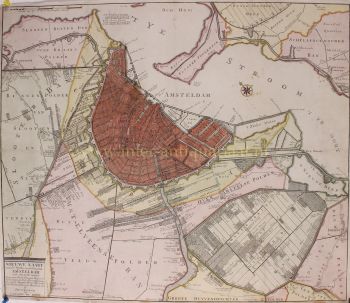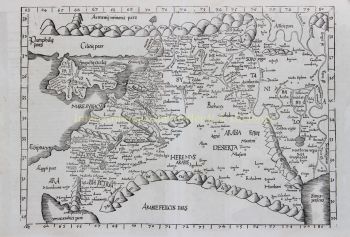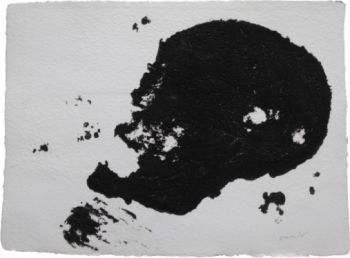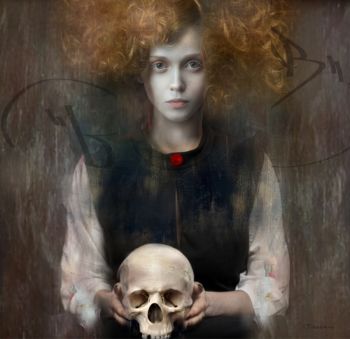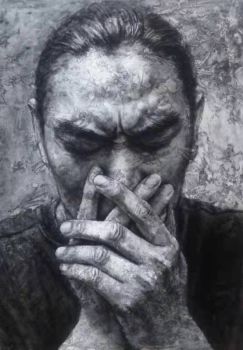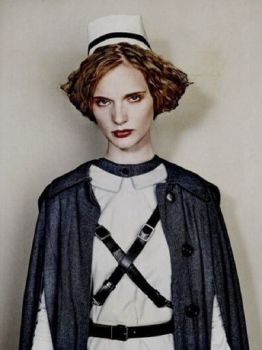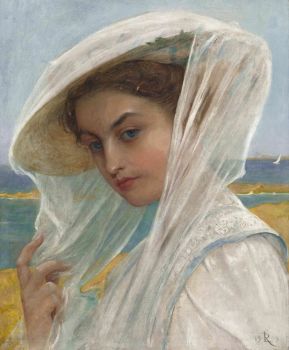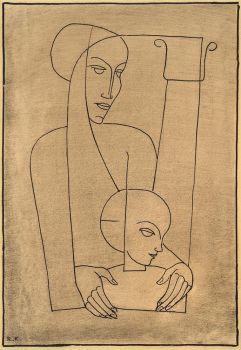Ink drawing 'Femme à la cigarette' 1920 - 1930
Jacques Villon
Ink
32 ⨯ 38 cm
ConditionGood
Price on request
Dille Art
- About the artworkA swift ink sketch depicts a young woman, casually smoking and casting a somewhat bored glance towards her portraitist. Exquisitely captured with just a few strokes, Jacques Villon (FR. 1875-1963) has concentrated his focus on her face, while allowing the remaining lines to fade away, seemingly irrelevant.
Is she his model, taking a moment for a cigarette break after posing? Or perhaps it's a quick sketch made in a bar, where he spots her seated, appearing a tad weary and disinterested. Nevertheless, it exudes the ambiance of Paris circa 1920, as if Jacques Villon has encapsulated the essence of the era on a mere piece of paper.
And he was indeed a master in various realms – from being an illustrator for newspapers, magazines, and posters in the early stages of his career to his later acclaim as a world-renowned draftsman, printmaker, and painter, a pioneer of Cubism, and founder of the famed 'Groupe d'Or' or better known as 'Groupe Puteaux', a true avant-garde movement.
The ink drawing is signed in the lower left corner with 'Jacques Villon'.
Biography:
Jacques Villon, born Gaston Duchamp on July 31, 1875, in Damville, France, was a prominent French artist who played a significant role in the development of Cubism. As the older brother of Marcel Duchamp, one of the founders of Dadaism, and Raymond Duchamp-Villon, a sculptor, and sister Suzanne Duchamp, a painter, Villon grew up in an artistic family that nurtured his passion for art. To distinguish himself from his brothers and sister, he eventually adopted the last name of the French medieval poet François Villon and began calling himself Jacques Villon.
Villon, schooled at the Académie Julian, began his artistic career as an illustrator and graphic designer. At the time, he was influenced by Edgar Degas, Henri de Toulouse-Lautrec, and Théophile-Alexandre Steinlen, but he longed for more depth and expression in his work. He experimented with various styles and techniques before finding his true calling in Cubism, an avant-garde movement that challenged traditional notions of space and form.
In his early works, he showed influences of Impressionism and Post-Impressionism, but he quickly evolved into a more experimental style.
In the early years of the 20th century, Villon joined the circle of artists known as the Cubists, including Pablo Picasso, Georges Braque, and Juan Gris.
Together with his brother Marcel Duchamp, Raymond Duchamp-Villon, Albert Gleizes, Fernand Léger, Juan Gris, and André Lhote, he founded the 'Groupe Puteaux', named after the suburb of Paris where he had been living since 1906 and where the group gathered in Jacques Villon's studio. They were also known as the 'Groupe d'Or'.
The group was an important center of experimental art and a breeding ground for new ideas and techniques.
Villon's work as a Cubist is characterized by his use of geometric shapes and the fragmentation of forms and space. He was a master at combining multiple viewpoints into a single image, giving his paintings a sense of dynamism and complexity.
In addition to his work as a painter, Villon was also active as a printmaker and sculptor. He made numerous drawings, etchings, engravings, and woodcuts, and his work in the graphic arts was highly regarded.
Throughout his career, Villon exhibited regularly in Paris and other major art centers around the world. His work was recognized and appreciated for its innovative approach to art and its significant role in the development of Cubism.
Jacques Villon died on June 9, 1963, in Puteaux, France, but his influence on modern art continues to live on. His work is still admired and studied as an important part of modern art history, and his contribution to the Groupe Puteaux and Cubism is recognized as invaluable to the art world.
Many major museums have a work by Jacques Villon in their collection, such as the MOMA, New York, Bibliothèque Nationale Paris, Museum of Fine Arts Boston, Guggenheim New York, Musée Art Moderne Ville de Paris, Art Institute of Chicago, and many others, including our own Rijksmuseum.
Literature:
- Benezit; Dictionary of Artists, volume 14, p. 340-344. Éditions Gründ Paris, 2006.
- Patricia Frantz Kery; , 'Art Deco Graphics', by Balanced House Ltd, Abrams, New York 1986. P. 53
-Douglas Cooper; 'The Cubist Epoch', Phaidon Press Limited Oxford in association with the LA County Museum of Art & the Metropolitan Museum of Art, 1976, P. 97, 100-2, 104, 109, 111, 112-4, 115,117-8, 121, 150, 155, 175,99, 316.
Condition:
There's a small tear in the paper and a crease in one corner, at the bottom left. Additionally, the paper has yellowed slightly with age.
Meisurements:
Drawing:
Length: 38 cm (14,96")
Width: 32,5 cm (12,8")
Framed:
Length: 58 cm (22,83")
Width: 52,5 cm (20,67") - About the artist
Jacques Villon (born July 31, 1875, Damville, Normandy, France—died June 9, 1963, Puteaux, near Paris) was a French painter and printmaker who was involved in the Cubist movement; later he worked in realistic and abstract styles.
Villon was the brother of the artists Suzanne Duchamp, Raymond Duchamp-Villon, and Marcel Duchamp. In 1894 he went to Paris to study law, but, once there, he became more interested in art, and he spent the next 12 years contributing illustrations and cartoons to newspapers.
In 1903 Villon was one of the founders of the Salon d’Automne, an exhibiting association that was created as an alternative to the traditional Salon. He began to study painting in 1904. In 1906 he moved to the Parisian suburb of Puteaux, where he was able to devote himself primarily to painting.
Villon adopted a Neo-Impressionist style in his first paintings. About 1910, however, he began to develop his mature style, in which he combined a Cubist use of flat, geometric shapes with a palette of luminous colours.
He and other Cubist-influenced artists (including his two brothers) formed a group called the Section d’Or (“Golden Section”) in 1912; Villon suggested the name to emphasize the group’s interest in geometric proportions.
Are you interested in buying this artwork?
Artwork details
Related artworks
René Lalique
An early vase 'Bluets' designed by Rene Lalique (1860-1945)1910 - 1920
Price on requestLennart Booij Fine Art and Rare Items
Frères Daum
Daum Nancy – “Paysage Soleil Couchant” vase with two applied handles1900 - 1910
Price on requestAntiques Emporium
1 - 4 / 24- 1 - 4 / 24
Isaac Israels
"Een essayeuse bij het modehuis Hirsch"1865 - 1934
Price on requestStudio 2000 Art Gallery
1 - 4 / 24Shiba Kokan
Painting of a Fantasy Dutchmanearly 19th
Price on requestZebregs & Röell - Fine Art - Antiques
Willem Witsen
Waiting carriages in front of Waterloo Bridge1850 - 1900
Price on requestKunsthandel Pygmalion
1 - 4 / 24- 1 - 4 / 12

































